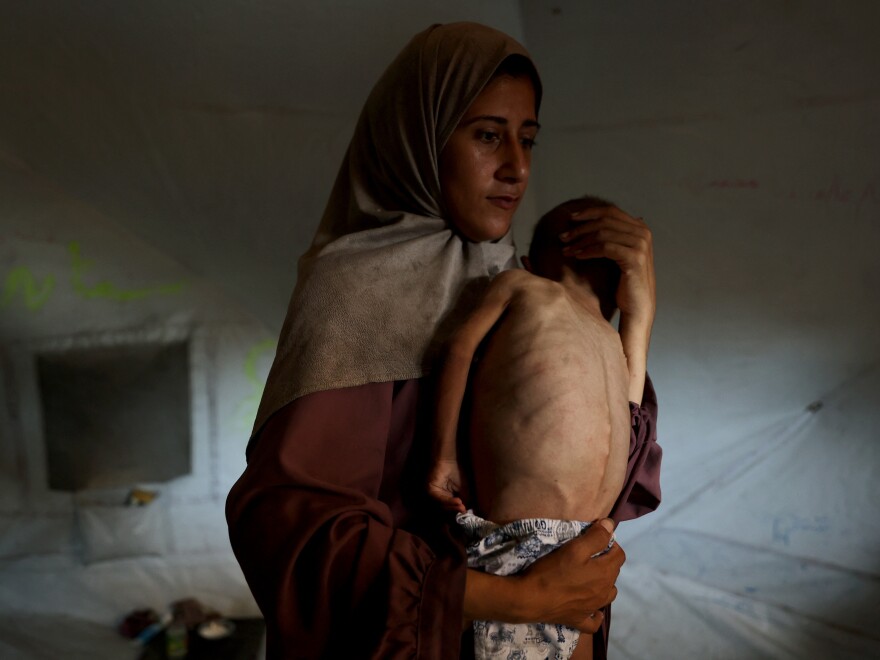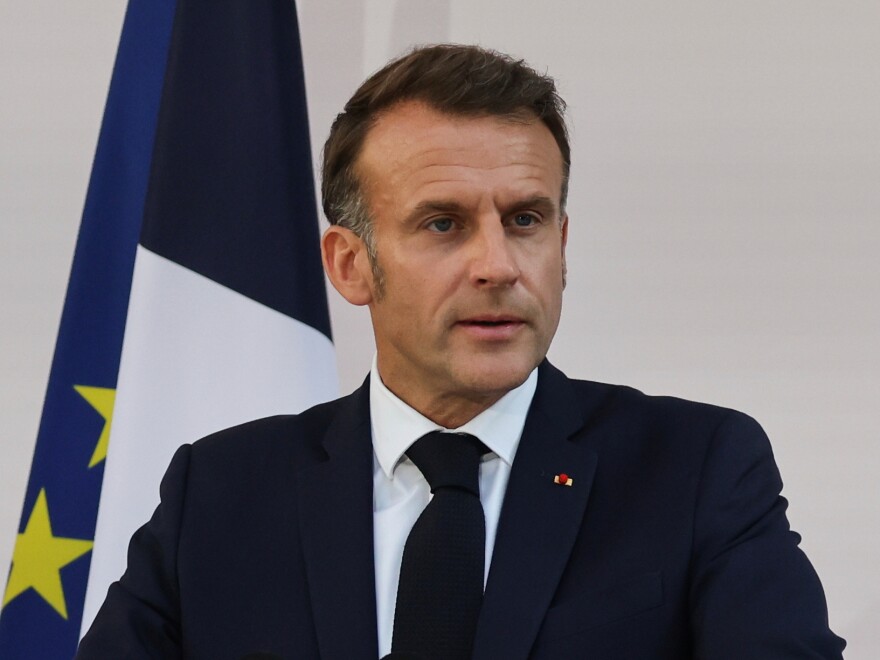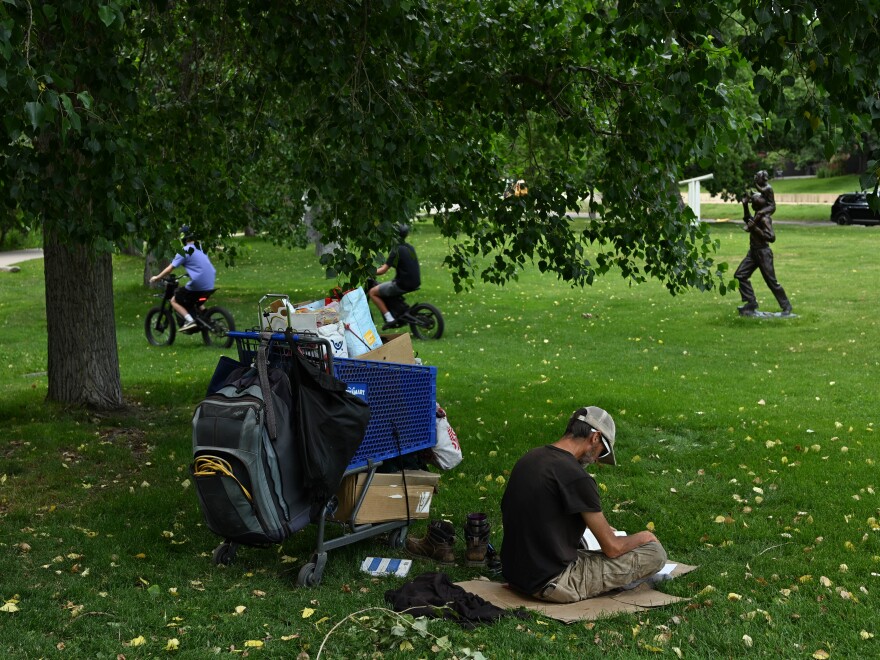Updated @ 5:43 PM EDT on July 26, 2025
Aid organizations warn that children are most at risk of starving as hunger and disease continue to plague Palestinians in Gaza. The most recent grim predictions come as relief deliveries have all but stopped and Israeli attacks have pushed the people into a more constrained location.
A new and deadly chapter of the conflict began in March when Israel restarted its bombardment of Gaza, bringing an end to a brief truce that had been established in January. Negotiations have deadlocked thus far, despite President Trump’s insistence on Israeli Prime Minister Benjamin Netanyahu to agree to a new truce.
This week, U.S. Middle East envoy Steve Witkoff traveled to Italy to meet with Israeli and Qatari officials in an attempt to broker a new ceasefire that would end the fighting that started on Oct. 7, 2023, when Hamas fighters based in Gaza attacked Israel, killing almost 1,200 Israelis and kidnapping 251 more. Less than half of the 50 Israeli hostages are thought to still be alive, and the January truce was intended to make it easier for them to return.
However, Witkoff wrote on X on Thursday that U.S. team members were leaving Qatar, where the negotiations had taken place, because Hamas’s answer “clearly shows a lack of desire to reach a ceasefire in Gaza.”
Approximately 100 humanitarian and human rights organizations warned this week that Gaza faces the threat of “mass starvation.”
An overview of the situation in Gaza, including coverage from Anas Baba of NPR in Gaza City, may be found here.
1. How many Palestinians in Gaza have been killed since the start of the conflict
As on July 24, Israeli troops had killed 59,587 Palestinians and injured 143,498 others, including 8,363 individuals since a wave of Israeli strikes started in March 2025, according to Gaza’s Health Ministry.
According to the U.N. Human Rights Office, since May, over 1,000 Palestinians have been killed while attempting to obtain food, the majority of them close to charity distribution locations managed by the Gaza Humanitarian Foundation, which is supported by both Israel and the United States. The U.N. estimates have been dismissed by the GHF as “false and exaggerated.”
According to UNICEF, since the Oct. 7, 2023, onslaught on Israel by Hamas, 17,000 children have been murdered and another 33,000 injured. During a July 16 meeting of the U.N. Security Council, Catherine Russell, the executive director of UNICEF, described the death toll as “a whole classroom of children killed every day for nearly two years.”
“These children are not combatants,” Russell stated. “They are being killed and maimed as they line up for lifesaving food and medicine.”
Few of the infants receiving care at Gaza City’s Patient’s Friends Hospital are strong enough to cry. Most of them lie limp in the arms of moms who are so severely malnourished that they are unable to produce breast milk.
Najah Abu Shihada, a 19-year-old mother, took her young son to receive therapy. He weighs only 6.5 pounds at one year old, which is the weight of a baby.
“I wake up hungry, and I go to sleep hungry,” Shihada comments. “A loaf of bread costs six dollars. Nobody has nearly enough of it.
Due to a shortage of materials, the hospital has been forced to halt its malnutrition treatment program. Said Salah, the medical director of Patient’s Friends, told NPR that things are becoming worse every day. “The prognosis is bad than yesterday,” he asserts, “and tomorrow will be bad than today.”
On XThursday, Philippe Lazzarini, the commissioner-general of the U.N. Palestinian aid organization UNRWA, wrote: “‘People in Gaza are neither dead nor alive, they are walking corpses’: a colleague in #Gaza told me this morning.”
“Most children our teams are seeing are emaciated, weak & at high risk of dying if they don’t get the treatment they urgently need,” Lazzarini said. He continued, “More than 100 people, the vast majority of them children, have reportedly died of hunger.”
2. How many have been internally displaced
At least 1.9 million Palestinians, or over 90% of Gaza’s population, are internally displaced, according to the UN. “Many have been displaced repeatedly, some 10 times or more,” UNRWA claims.
Israel has mandated mass evacuations of Gaza’s civilian population since the war intensified in March. The United Nations reports that 88% of Gaza is currently under Israeli military control, with the remaining 12% being the only parts of the region that Palestinian residents may still reach.
The Israeli military has even blocked access to Gaza’s Mediterranean coast.
3. How much access to food and water there is in Gaza
According to Ross Smith, director of emergencies for the U.N. World Food Programme, the food crisis in Gaza has reached “new and astonishing levels of desperation,” he told reporters Monday.
According to Smith, a third of Gaza’s Palestinian population goes days without eating. According to him, the region was experiencing severe acute malnutrition in roughly 100,000 women and children.
Malnutrition among Gaza’s under-five-year-old population has increased, according to OCHA, the U.N. humanitarian affairs office. 9% of the over 56,000 examined were classified as “acute malnourished” in the first two weeks of July, compared to 2.4% in February and 6% last month. Acute malnutrition affected 16% of 15,000 children in Gaza City, which is four times more than the percentage in February.
An estimated 97% of Gaza’s drinking water was deemed dangerous even before to the war because it was tainted by sewage, agriculture runoff, and the sea. According to Human Rights Watch, the system has collapsed since October 2023 as a result of Israeli attacks targeting vital infrastructure, including wells, desalination units, sewage pumps, tanks, and pipes.
4. How much aid is getting through in vehicles
The Gaza Humanitarian Foundation (GHF) is bringing some food into Gaza, but help is dispersed at odd times inside Israeli military zones, where hundreds of Palestinians have been murdered by Israeli gunfire while attempting to get food.
According to Shihada, the baby’s mother at Patient’s Friends hospital, she hasn’t eaten in a week, she told NPR. She claims she thought about attempting to collect food from the GHF but is afraid of getting shot by Israeli troops. In December, the father of her son was murdered.
Israel’s military claims that its troops have only fired warning rounds near aid distribution points and that Hamas has redirected humanitarian aid.
According to aid groups, vehicles laden with food and supplies are waiting at Gaza’s borders, but they are unable to obtain authorization from Israel’s military to enter. Israel accuses Hamas of impeding assistance efforts and claims that aid is entering through GHF.
Mercy Corps, an aid organization that warns of famine in Gaza, has Kate Phillips-Barrasso as its vice president of global policy and advocacy. She told NPR that the area is “at a precipice” and is “tipping into a point of no return.”
According to her, a sack of flour now costs $480, and her own employees in Gaza spend a significant portion of their days merely looking for food for their family.
This article was reported from Tel Aviv, Israel by Emily Feng of NPR.
Copyright 2025 NPR






